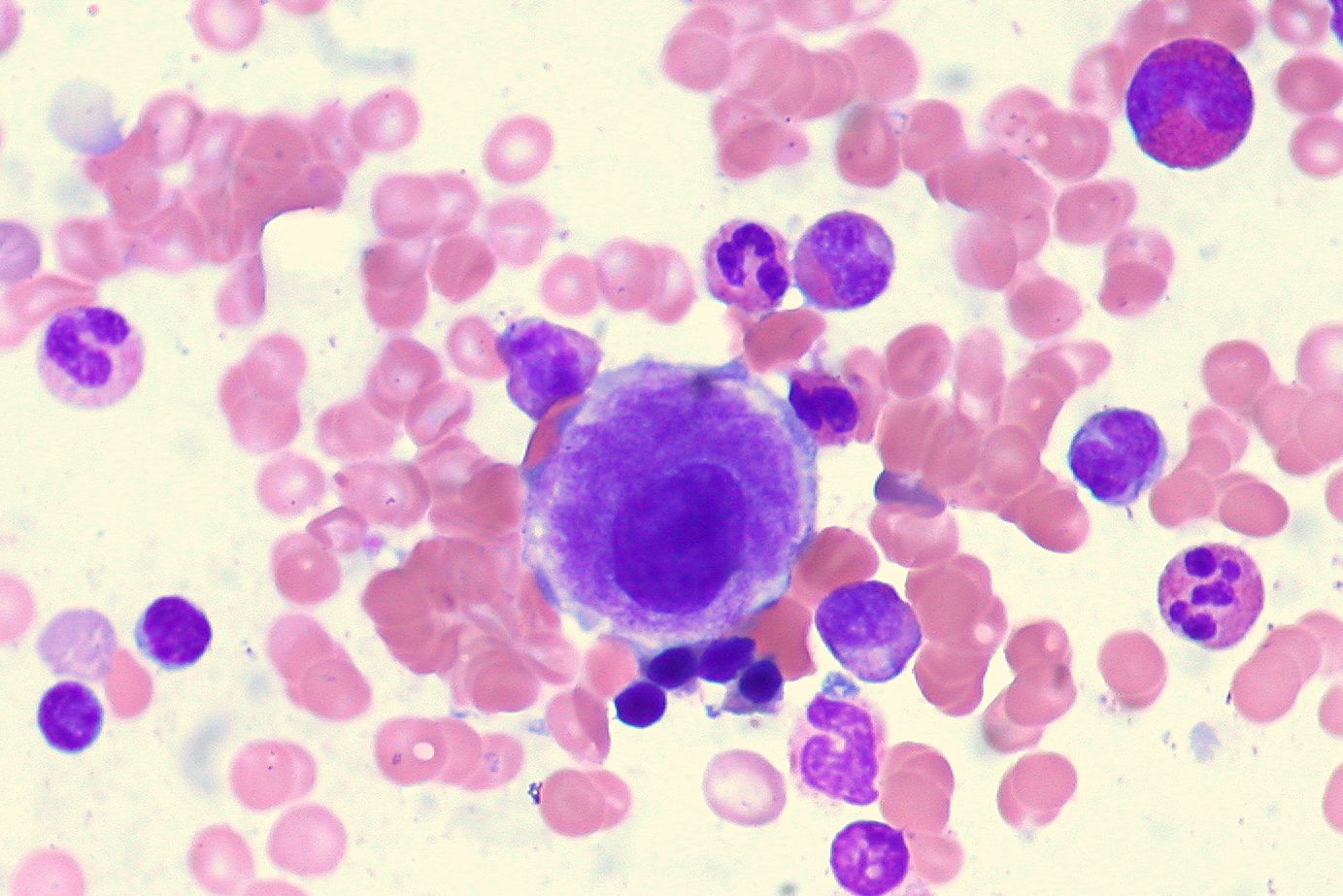ESAs Yields Response in VEXAS Syndrome With or Without MDS
In patients with VEXAS Syndrome with or without MDS, ESAs/luspatercept generated positive hematologic improvement-erythroid responses.
In patients with VEXAS Syndrome with or without MDS, ESAs/luspatercept generated positive hematologic improvement-erythroid responses.

Treatment with erythropoietin stimulating agents (ESAs) and/or luspatercept (Reblozyl) demonstrated positive clinical efficacy and safety in patients with vacuoles in myeloid progenitors, E1 ubiquitin-activating enzyme, X-linked, autoinflammatory manifestations of the somatic (VEXAS) syndrome with or without myelodysplastic syndrome (MDS), based on results from a multicenter, retrospective study presented at the 2024 American Society of Hematology Annual Meeting & Exposition (ASH).
At week 16, hematologic improvement-erythroid (HI-E) was 38.8%, overall; 43.7% for no transfusion dependency (NTD); 25.6% for low transfusion dependency (LTD); and 23.0% for high transfusion dependency (HTD). A total of 2 responders, both with HTB, relapsed after 6.3 and 9.2 months, respectively. The remaining responders had responses between 4.3 and 96.0 months.
Additionally, baseline low levels of endogenous erythropoietin were associated with higher levels of HI-E. Lower rates and short-term responses to ESA, as well as the ability to identify patients with poorer outcomes were correlated with red blood count (RBC) transfusion dependence.
Also, 8 patients (1 with no transfusion dependency, 3 with low transfusion burden [LTB], and 4 with high transfusion burden [HTB]) were treated with luspatercept using the approved schedule following ESA failure. Of the 8 patients, 7 had MDS; none had the SF3B1 mutation. By week 16, 4 of the 8 (50.0%) patients had reached HI-E; 1 patient with NTD and 3 with LTD. No patients with HTB reached HI-E. Additionally, 3 of 4 patients that reached HI-E continued luspatercept and responded after 10, 15, and 16 months, respectively. Luspatercept treatment was discontinued by the last responders after 6 months; other therapeutic interventions were required for severe inflammation.
At week 16, the baseline predictive factor of HI-E response for ESA was age at ESA onset (risk ratio [RR], 1.00; 95% CI, 0.94-1.07), reticulocytes at ESA onset (RR, 0.99; 95% CI, 0.96-1.01), and platelet count at ESA onset (RR, 1.00; 95% CO, 0.99-1.01).
“Exact mechanisms underlying anemia in VEXAS are not yet elucidated and therapeutic options are limited,” lead study author Mael Heiblig, MD, PhD, in the hematology department at the Centre Hospitalier Universitaire de Lyon in Pierre-Bénite, France, and coauthors wrote in the poster. “Besides red blood cell transfusion, there is no other validated therapeutic option regarding anemia management.”
A total of 45 patients were enrolled, 30 of which were RBC transfusion dependent and 15 were RBC transfusion independent. Moreover, 37 patients had MDS
Patients were eligible for participation if they had VEXAS syndrome with a previously reported UBA1 mutation, if they were with or without associated MDS, and if they had been treated with an ESA or luspatercept. Patients were also stratified based on transfusion dependency burden: NTD, LTD, and HTD.
Regarding UBA1 mutations, 40.0% of patients with RBC transfusion dependence and 13.5% of patients with RBC transfusion independence had the p.Met41Leu variant; 23.3% and 46.5% had the p.Met41Thr variant; 20.0% and 0.0% had the p.Met41Val variant; and the remaining patients had varying types of mutation.
The study’s primary objective was to evaluate HI-E in patients with VEXAS syndrome treated with ESA and/or luspatercept at week 16. HI-E was assessed at week 16 and week 24 using the International Working Group’s 2018 guidelines.
Key secondary objectives include evaluating HI-E in patients with VEXAS syndrome at week 24 post-treatment, start assessing RBC transfusion independence rate with ESA/luspatercept, and evaluating the duration of response.
Regarding safety, during erythropoietin treatment, 3 of 18 patients experienced venous thrombotic events; no venous thrombotic events occurred during luspatercept exposition. Infection was the main cause of death (n = 5), followed by MDS progression (n = 2). The authors noted that ESA and luspatercept “appear” to be safe, showing no excess of venous thromboembolism.
Heiblig concluded by saying that this study shows “the first signs of clinical efficacy” for luspatercept in patients with VEXAS syndrome and that the results support further exploration of ESA and luspatercept in VEXAS syndrome “prospectively.”
Reference
Heiblig M, Jachiet V, Hadjadj J, et al. Clinical efficacy of erythroid stimulating agent (ESA) and Luspatercept (LUSPA) in Vexas syndrome with or without myelodysplastic syndrome (MDS): a multicenter retrospective study by the Frenvex group. Blood. 2024;144(suppl 1):2674. doi:10.1182/blood-2024-210879